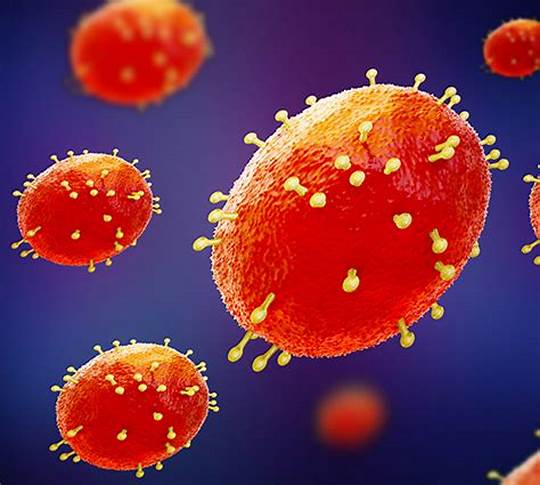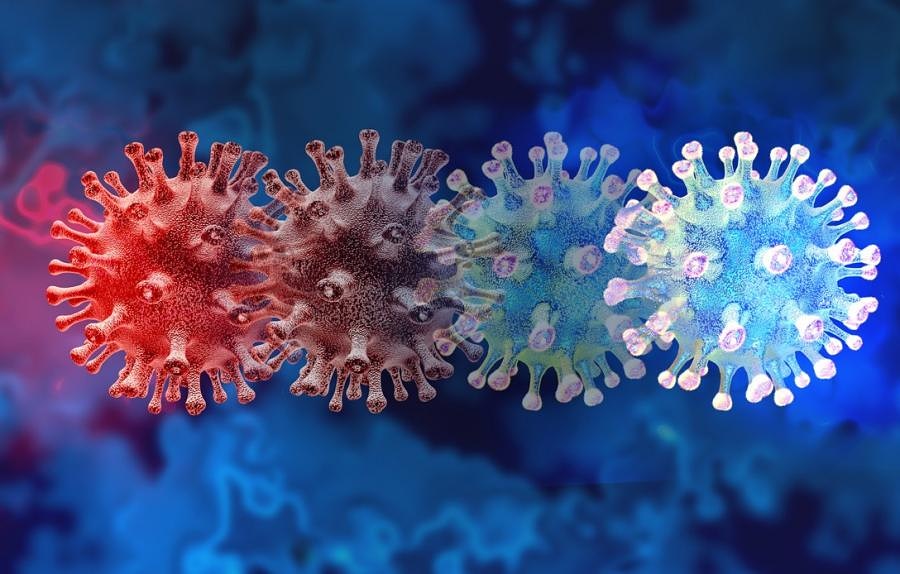Mpox Virus New Strain: A new strain of Mpox (Monkeypox) has been found in India, and it is believed to be more dangerous than the corona virus! In this video, we will learn what the new strain of Mpox is, what are its symptoms, and how it spreads. Apart from this, we will also discuss ways to stay safe from this virus and understand its effects.
Mpox Virus New Strain: A Potential Threat More Dangerous Than the Coronavirus?
In recent months, there has been growing concern about a new strain of the Mpox virus (formerly known as Monkeypox) that has been discovered in India. Public health experts and authorities have raised alarms, comparing its potential dangers to the coronavirus pandemic. With its emergence, there are fears that this new strain may pose an even greater threat than the previous Mpox strains, due to its increased transmission capability and potentially more severe symptoms. In this comprehensive guide, we will explore what the new strain of Mpox is, its symptoms, how it spreads, and what preventive measures can be taken to protect oneself from this virus.
1. Understanding the Mpox Virus: A Brief Overview
Mpox is a viral zoonotic disease, meaning it is transmitted from animals to humans. The virus is a part of the Orthopoxvirus family, which also includes viruses like smallpox. Historically, Mpox has been endemic in parts of Central and West Africa, where outbreaks have been linked to close contact with animals, especially rodents and primates.
Mpox was first identified in humans in 1970 in the Democratic Republic of the Congo (DRC). It has since spread to various other countries through human-to-human transmission, albeit less efficiently than viruses like the flu or coronavirus. Until recently, outbreaks were sporadic and contained, with limited cases outside of Africa. However, in 2022 and 2023, global outbreaks of Mpox began to alarm health officials as the virus reached non-endemic regions, including Europe and the Americas. Now, with a new strain emerging in India, concerns are mounting.
2. The Emergence of the New Strain: What We Know So Far
The discovery of a new strain of the Mpox virus in India has sparked immediate concern. Scientists believe this new variant may be more virulent and contagious compared to previously known strains. Preliminary data suggests that this strain has mutated in ways that could enhance its ability to spread more efficiently among humans, increasing the likelihood of an outbreak. While previous strains of Mpox typically had a low transmission rate between humans, this new variant may spread more easily through close contact, respiratory droplets, and possibly even through surface contamination, similar to the way the coronavirus spreads.
Moreover, the new strain in India is suspected of causing more severe symptoms in those infected, particularly in individuals with weakened immune systems or underlying health conditions. This has led to a rapid response from Indian health authorities to contain the virus and prevent its further spread.
3. Symptoms of the New Mpox Strain: What to Look Out For
The symptoms of Mpox are similar to other poxviruses but can vary in severity depending on the strain. For this new strain, the symptoms appear to be more intense and potentially life-threatening for some individuals. Below are the key symptoms:
Initial Symptoms:
- Fever: One of the earliest signs of infection is a high fever, often accompanied by chills.
- Headache: Severe headaches, sometimes debilitating, have been reported.
- Muscle Aches: Muscle pain and weakness are common.
- Fatigue: The virus can cause extreme fatigue, often leading to bed rest.
- Swollen Lymph Nodes: Lymphadenopathy, or swollen lymph nodes, is a hallmark symptom of Mpox and distinguishes it from smallpox.
Advanced Symptoms:
- Rash and Skin Lesions: After a few days of the initial symptoms, a rash typically develops. The rash starts as flat red spots that later turn into raised bumps, eventually becoming fluid-filled blisters (vesicles) and then scabs. These lesions can appear anywhere on the body, but they are most commonly found on the face, palms, and soles of the feet.
- Painful Sores: In severe cases, these lesions can become large and painful, particularly in mucosal areas such as the mouth, eyes, and genital regions.
- Pneumonia and Respiratory Issues: In some cases, individuals may develop severe respiratory symptoms, leading to pneumonia.
4. How the Virus Spreads: Modes of Transmission
The new strain of the Mpox virus is believed to spread more easily than its predecessors. Understanding how the virus transmits is crucial for preventing further spread. Here are the primary ways it is transmitted:
Human-to-Human Transmission:
- Close Contact: The virus spreads primarily through direct contact with the rash, scabs, or bodily fluids of an infected person. This includes touching contaminated clothing, bedding, or surfaces that have been in contact with lesions.
- Respiratory Droplets: Respiratory droplets from coughing, sneezing, or talking can transmit the virus, particularly in close proximity.
- Prolonged Face-to-Face Contact: Similar to coronavirus, prolonged face-to-face interactions increase the risk of transmission through respiratory droplets.
- Sexual Contact: While Mpox is not classified as a sexually transmitted infection (STI), it can be transmitted during intimate contact, including kissing and close skin-to-skin contact.
Animal-to-Human Transmission:
- Infected Animals: The original transmission of Mpox to humans comes from close contact with infected animals, particularly primates and rodents. Handling animals or eating improperly cooked bushmeat can increase the risk of infection.
5. Comparing Mpox to Coronavirus: Which Is More Dangerous?
While coronavirus has caused a global pandemic with millions of deaths, the Mpox virus is traditionally less contagious. However, the new strain of Mpox presents a different challenge. There are several reasons why experts believe this new strain could be more dangerous than the coronavirus:
1. Higher Mortality Rate:
Historically, the mortality rate for Mpox has been between 1-10%, depending on the strain and the quality of medical care available. For comparison, COVID-19’s mortality rate has been between 1-3% in most countries. If this new strain of Mpox exhibits a higher mortality rate than previous strains, it could prove to be deadlier.
2. Different Modes of Transmission:
While Mpox has traditionally spread through close physical contact, the new strain is suspected to spread more effectively through respiratory droplets, making it more contagious than older versions. However, it still appears to be less contagious than COVID-19, which spreads rapidly through the air over longer distances.
3. Longer Incubation Period:
The incubation period for Mpox is typically between 5 and 21 days, which is longer than the incubation period for COVID-19. This means individuals could potentially spread the virus unknowingly for a longer period before showing symptoms, increasing the risk of an outbreak.
4. Severity of Symptoms:
Mpox can cause more severe symptoms than mild cases of COVID-19. The painful skin lesions, swollen lymph nodes, and potential respiratory complications can be more debilitating than the typical flu-like symptoms of COVID-19.
6. Prevention and Safety Measures: How to Stay Safe
Preventing the spread of the new strain of Mpox requires awareness and adherence to safety measures. Here are some key ways to protect yourself and others:
1. Practice Good Hygiene:
- Handwashing: Regularly wash your hands with soap and water, especially after touching surfaces or being in public places.
- Disinfection: Clean and disinfect frequently-touched surfaces, especially if someone in your household is showing symptoms of illness.
2. Avoid Close Contact with Infected Individuals:
- Isolate Suspected Cases: If someone is showing symptoms of Mpox, particularly skin lesions, isolate them to avoid spreading the virus.
- Use Protective Gear: Healthcare workers and caregivers should use protective gear, such as gloves and masks, when caring for infected individuals.
3. Safe Animal Practices:
- Avoid Contact with Wild Animals: To reduce the risk of animal-to-human transmission, avoid contact with wild animals, particularly rodents and primates.
- Proper Cooking: Ensure that all animal products, such as meat, are cooked thoroughly to kill any potential viruses.
4. Get Vaccinated:
- Vaccination: Some vaccines used to eradicate smallpox have been found effective against Mpox. Consult with health authorities to determine if vaccination is recommended, especially for high-risk groups such as healthcare workers.
7. A Serious Public Health Threat
The emergence of a new strain of Mpox in India presents a serious public health concern, with the potential to cause widespread illness. While it may not spread as quickly as COVID-19, the virus’s higher mortality rate, severe symptoms, and ability to spread through both physical and respiratory contact make it a threat that should not be underestimated.
By understanding the symptoms, transmission methods, and preventive measures, individuals can protect themselves and help prevent the virus from spreading further. Governments, healthcare providers, and individuals alike must remain vigilant and prepared to respond to this new strain of Mpox. Continued research and global cooperation are essential to control this outbreak and prevent another global health crisis like the coronavirus pandemic.


